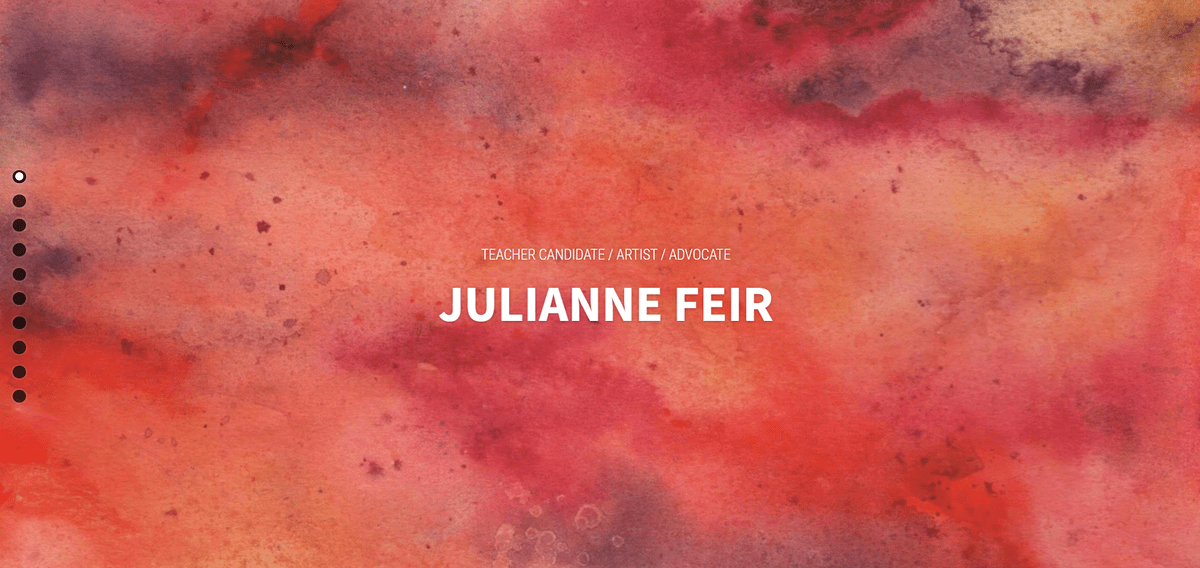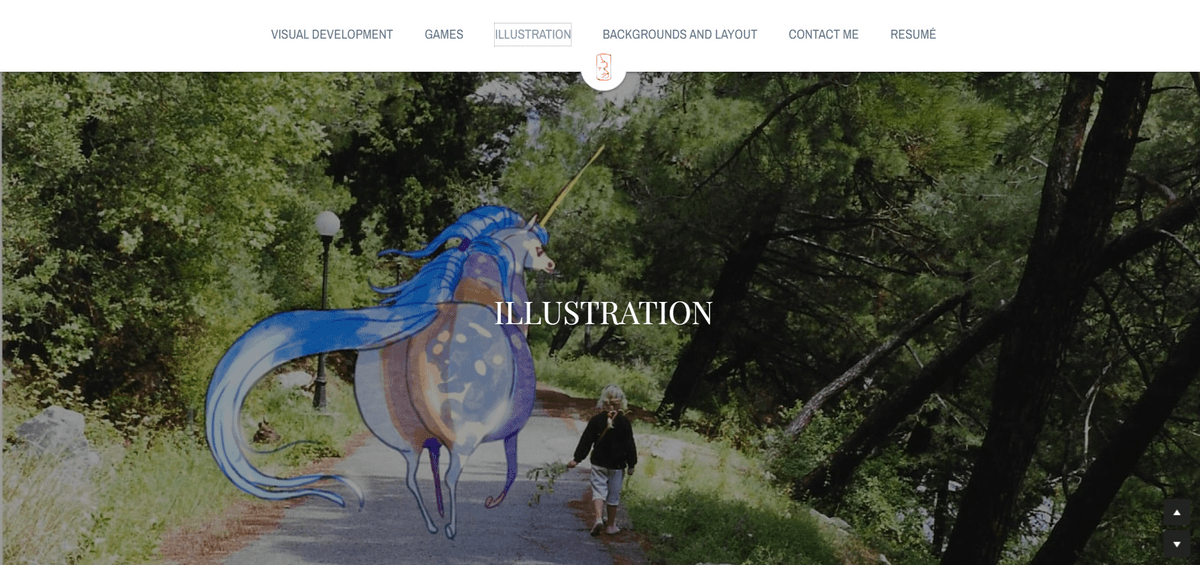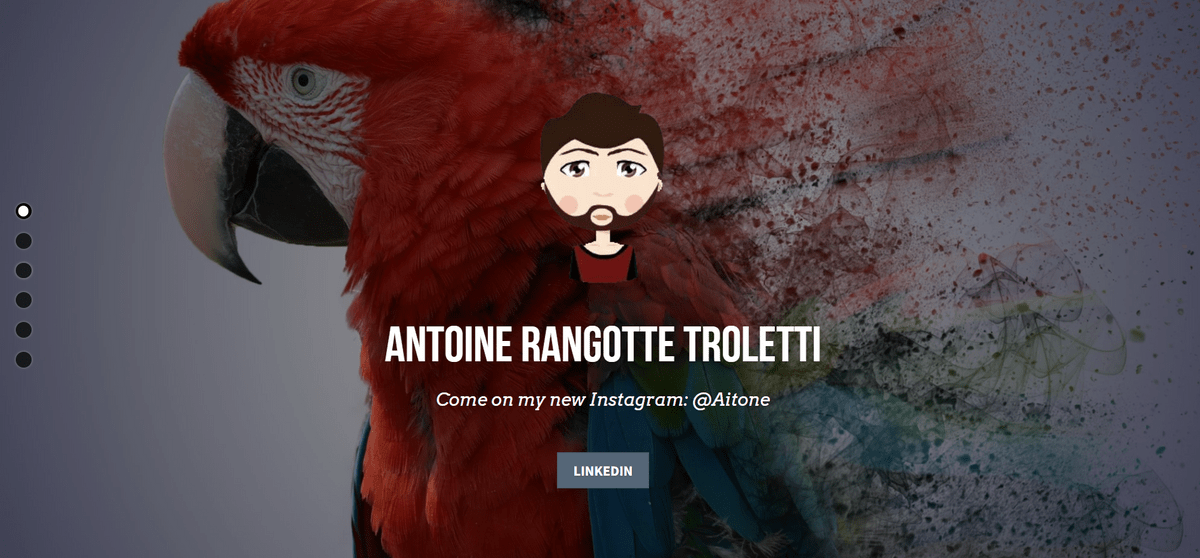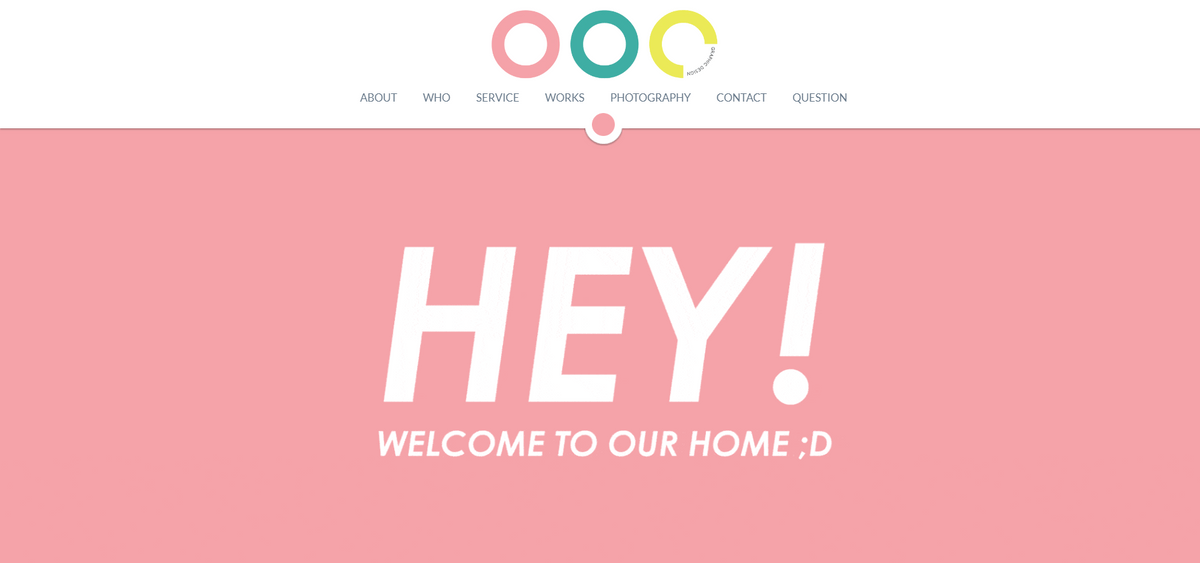Hue's Clues: Color Psychology And Why It Rules Your E-commerce World
Hue's Clues: Color Psychology And Why It Rules Your E-commerce World

Color psychology is a fascinating aspect of marketing that delves into the profound impact of colors on consumer behavior. Understanding color psychology in marketing can significantly enhance the effectiveness of branding, advertising, and web design strategies. In this guide to color psychology in marketing, we will explore the science behind color psychology and its application in various marketing campaigns.
Understanding What is Color Psychology in Marketing
Color psychology plays a crucial role in influencing consumer perceptions and emotions. By comprehending the psychological effects of different colors, marketers can strategically use them to evoke specific responses from their target audience. This understanding allows brands to create compelling visuals that resonate with consumers more deeply.
Understanding the impact of color psychology can also help businesses to create a cohesive and memorable brand identity. By consistently using specific colors in their marketing materials and products, companies can reinforce their brand image and build strong associations in the minds of consumers. This can ultimately lead to increased brand recognition and loyalty and a competitive edge in the market.
Exploring the Impact of Color on Marketing Campaigns
The impact of color in marketing campaigns cannot be overstated. Colors can convey brand messages, elicit certain emotions, and drive purchasing decisions. Color psychology can transform ordinary marketing materials into powerful tools for engaging and converting potential customers when utilized effectively.
Leveraging Color Psychology for Marketing Success
Color psychology has been shown to significantly impact consumer purchasing decisions, with certain colors evoking specific emotions and associations. By strategically incorporating these colors into branding and marketing materials, companies can effectively communicate their message and connect with their audience on a deeper level. Whether using calming blues to convey trust and reliability or vibrant reds to create a sense of urgency, understanding the power of color is crucial for standing out in today's crowded marketplace.
The Basics of Color Psychology
Image taken from Julianne Feir
Color psychology is a fascinating aspect of marketing that delves into the impact of colors on consumer behavior. Understanding how colors affect emotions and perceptions is crucial for marketers to create compelling campaigns that resonate with their target audience.
1. How Colors Affect Consumer Behavior
Colors have the power to evoke specific emotions and influence consumer decisions. For example, warm colors like red and orange can create a sense of urgency, while cool colors like blue and green can promote feelings of trust and relaxation. Businesses can effectively steer consumer behavior by strategically using these colors in marketing materials.
It's no wonder big brands spend so much time and money choosing the perfect color scheme for their logos and packaging. The right colors can make you feel like you need that new gadget or that trendy outfit, even if you didn't know it existed five minutes ago. They're whispering in your ear, "You want this. You need this. Buy it now!"
2. The Science Behind Color Psychology
The science behind color psychology lies in how different hues stimulate neural pathways in the brain, triggering emotional responses. Psychologists and marketers have extensively studied this phenomenon, leading to a deeper understanding of how color influences human perception and decision-making processes.
Unsurprisingly, companies use color to manipulate our emotions and influence our purchasing decisions. From the calming effect of blue in healthcare settings to the appetite-inducing power of red and yellow in fast-food logos, it's clear that color plays a sneaky role in our everyday lives. Next time you reach for that bright red lipstick or eye-catching turquoise sweater, remember: it's not just a color; it's a carefully calculated psychological tactic!
3. Critical Principles of Color Psychology in Marketing
In marketing, understanding the fundamental principles of color psychology is essential for creating impactful branding and advertising strategies. By recognizing the associations people have with specific colors, marketers can effectively leverage these principles to communicate brand messaging and evoke desired emotional responses from consumers.
Color psychology is a powerful tool in the marketing arsenal, as it allows brands to tap into the subconscious associations people have with different colors. For example, blue is often associated with trust and reliability, making it a popular choice for financial institutions and tech companies. By understanding these nuances, marketers can ensure their branding and advertising efforts are visually appealing and strategically aligned with their target audience's perceptions and emotions.
Now that we've covered the basics of color psychology let's delve deeper into implementing these insights into marketing strategies for maximum impact.
Implementing Color Psychology in Marketing Strategies
Image taken from Anne Sigismund
1. Choosing the Right Colors for Your Brand
When choosing the right colors for your brand, consider the emotional response you want to evoke from your target audience. Different colors have different psychological associations, so aligning your brand's color palette with the emotions and values you want to convey is essential. For example, if you want to exude a sense of trust and dependability, blue might be a suitable choice, while red can evoke excitement and passion.
When choosing your brand's color palette, it's also important to consider cultural associations with specific colors. For example, while white may symbolize purity and cleanliness in some cultures, it can represent mourning or death in others. Researching the cultural significance of colors in your target market is crucial to ensure your brand's colors are interpreted as intended. Ultimately, the right color choices can create a solid emotional connection with your audience and set your brand apart from the competition.
2. Utilizing Color Psychology in Branding and Logo Design
Incorporating color psychology into branding and logo design can significantly impact how consumers perceive your brand. Strikingly, a website builder known for its user-friendly interface, effectively utilizes color psychology in their branding by using a vibrant shade of orange that conveys energy and enthusiasm. By understanding the psychological impact of colors, you can strategically design logos and branding materials that resonate with your target audience.
Color psychology is a powerful branding tool; it's not just about choosing your favorite color. For example, green can signify growth and health, making it a popular choice for organic and eco-friendly brands. By understanding the nuances of color psychology, you can create a brand identity that speaks directly to your target audience's emotions and values. Don't just pick a color because it looks nice - think about what message you want to convey through your brand's visual identity.
3. Creating Emotional Connections through Color Choices
Color choices play a pivotal role in creating emotional connections with consumers. By understanding the psychological implications of different colors, you can intentionally use them to evoke specific emotions or associations that align with your brand's identity. For instance, incorporating warm tones like yellow or orange can create a sense of friendliness and optimism, while cool tones like green or blue can convey tranquility and reliability.
Color choices can also affect consumer behavior, with studies showing that specific colors can influence purchasing decisions. For example, red can create a sense of urgency and impulse, making it a practical choice for sales and promotions. On the other hand, using black can convey sophistication and luxury, which may appeal to high-end or luxury brands looking to attract discerning consumers. Understanding the impact of color psychology on consumer behavior can give your brand a competitive edge in the marketplace.
Now that we've discussed how to implement color psychology in marketing strategies by choosing the right colors for your brand, utilizing color psychology in branding and logo design, and creating emotional connections through color choices, let's explore the power of color psychology in advertising campaigns.
The Power of Color Psychology in Advertising
Image taken from Antoine Rangotte Troletti
Color psychology is crucial in advertising, influencing consumer behavior and shaping brand perceptions. By understanding the impact of colors in ad campaigns, marketers can effectively capture their audience's attention and evoke desired emotions.
Effective Use of Color in Ad Campaigns
Incorporating color psychology into ad campaigns can significantly enhance their effectiveness. For example, warm colors like red and orange can create a sense of urgency, prompting consumers to act. On the other hand, cool colors like blue and green can convey trust and tranquility, making them ideal for financial or healthcare ads.
Color psychology is just one aspect of effective ad campaigns. Compelling visuals, persuasive copy, and strategic placement are crucial in capturing consumers' attention. By combining these elements with an understanding of color psychology, advertisers can create impactful campaigns that resonate with their target audience and drive results.
Tips for Integrating Color Psychology into Advertising Strategies
To effectively integrate color psychology into advertising strategies, it's essential to consider the target audience and the emotions you want to evoke. Conducting A/B testing with different color schemes can help identify which combinations resonate best with your audience. Additionally, leveraging tools like Strikingly's color psychology chart can provide valuable insights into choosing the right colors for your ad campaigns.
1. Understanding Color Psychology in Marketing
To effectively integrate color psychology into advertising strategies, start by understanding the principles of color psychology in marketing. Color psychology explores how different hues evoke emotional responses, influence consumer behavior, and convey brand messages. Familiarize yourself with a color psychology chart to identify the emotions associated with specific colors. This foundational knowledge will guide color selection and help create a cohesive and intentional marketing color palette.
2. Applying Emotional Triggers
Use color psychology insights to apply emotional triggers in your advertising materials strategically. Different colors evoke varied emotions; red may stimulate excitement and urgency, while blue exudes trust and calmness. Tailoring your color choices to align with the desired emotional response can significantly impact consumer perceptions and engagement. Consider your target audience and the intended message to ensure a harmonious connection between the chosen colors and the emotions you aim to evoke.
3. Consistency Across Branding Elements
Maintain consistency in color choices across all branding elements to reinforce brand identity and recognition. A cohesive color scheme contributes to a unified brand image and strengthens brand recall. Create a guide to color psychology in marketing for your team to ensure a consistent application of colors in advertisements, logos, packaging, and other promotional materials. Consistency builds trust and familiarity, enhancing the overall impact of your advertising campaigns.
4. Cultural Considerations
Be mindful of cultural interpretations of colors when designing advertising strategies. Colors can have different meanings across cultures, and what evokes a positive response in one region may have a contrasting effect in another. Conduct thorough research to understand the cultural nuances associated with colors and adapt your marketing color psychology accordingly. This sensitivity ensures that your advertising messages resonate positively with diverse audiences, fostering a more inclusive and effective global marketing strategy.
5. Testing and Analyzing Impact
Implement a systematic approach to testing and analyzing the impact of color choices in your advertising campaigns. A/B testing can help determine which color variations elicit the most favorable responses from your target audience. Use data analytics to track click-through rates, conversion rates, and customer engagement based on color schemes. This empirical approach allows for continuous refinement of your color psychology in marketing strategy, ensuring that your advertising efforts are visually appealing and consistently effective in achieving your business objectives.
Maximizing Website Design with Color Psychology
Image taken from OOO Graphic Design
Color psychology plays a crucial role in web design, as it can significantly impact user experience and behavior on a website. By strategically utilizing colors, businesses can create a visually appealing and engaging online presence that resonates with their target audience.
Importance of Color in Web Design
Using color in web design goes beyond aesthetics; it can evoke specific emotions and influence user perceptions. Understanding the psychological impact of colors allows businesses to create websites that effectively communicate their brand identity and message. Companies can enhance user engagement and leave a lasting impression on visitors with a suitable color scheme.
1. Enhancing User Experience through Color Psychology
Color plays a crucial role in web design by influencing user experience through color psychology. Understanding the principles of color psychology in marketing is vital for creating a visually appealing and emotionally resonant website. By referring to a color psychology chart and following a guide to color psychology in marketing, web designers can strategically choose colors that evoke specific emotions and align with the brand's message. Thoughtful color selections can impact how users perceive and interact with the website, fostering a positive and memorable experience that encourages engagement and user satisfaction.
2. Establishing Brand Identity
In web design, color is a powerful tool for establishing and reinforcing brand identity. Consistency in color choices across the website, including the logo, typography, and overall design, helps create a cohesive and recognizable brand image. Marketing color psychology comes into play when selecting colors that reflect the brand's personality and values. By leveraging color psychology in marketing, web designers can strengthen the connection between the brand and its audience, facilitating brand recall and loyalty.
3. Guiding User Navigation and Interaction
Color is a visual cue to guide users through a website and enhance their navigation experience. Through color psychology, web designers can use contrasting colors to highlight essential elements such as calls-to-action, buttons, or navigation menus, drawing users' attention to critical areas. This strategic use of color contributes to a more intuitive and user-friendly interface, facilitating smoother navigation and increasing the likelihood of desired user interactions.
4. Communicating Information Effectively
Color is a powerful communication tool in web design, helping to convey information and messages effectively. By applying color psychology principles, designers can use specific colors to represent different categories, highlight important information, or get a particular mood. For instance, warm colors like red or orange may signify urgency or excitement, while cool colors like blue evoke a sense of calmness. This intentional use of color ensures that information is visually appealing and easily understood, enhancing the website's overall effectiveness.
5. Increasing Conversion Rates
The strategic implementation of color in web design can directly impact conversion rates. By aligning color choices with marketing color psychology principles, designers can create a website that resonates with the target audience and prompts desired actions. A well-designed color scheme can evoke trust, establish credibility, and encourage users to take specific actions such as purchasing or filling out a form. Regular testing and optimization based on color psychology insights contribute to a continual improvement in the website's ability to convert visitors into customers.
Using Color Psychology to Increase Conversions
Incorporating color psychology into website design can lead to increased conversions and sales. Businesses can strategically place call-to-action buttons in attention-grabbing colors to guide users towards desired actions such as purchasing or signing up for a newsletter. Additionally, contrasting colors for essential elements can draw users' attention and prompt them to act.
Color psychology is just one aspect of web design that can influence user behavior. Using typography, layout, and imagery is crucial in capturing and maintaining user attention. Combining these elements with strategic color choices allows businesses to create a visually appealing and effective website that leads to higher conversions and sales. In today's competitive online landscape, it's essential for companies to understand the impact of design on user behavior and to utilize every tool at their disposal to stand out from the crowd.
Tools and Resources for Creating a Color Psychology Chart
Creating a color psychology chart is essential for implementing color psychology effectively in web design. Tools like Adobe Color Wheel or Coolors allow businesses to explore color combinations based on psychological principles. These resources enable enterprises to select colors that align with their brand identity while resonating with their target audience.
By leveraging the power of color psychology in web design, businesses can create visually compelling websites that capture visitors' attention, drive conversions, and foster brand loyalty.
The Role of Color Psychology in Product Packaging
Image taken from In Plan View
Color psychology is crucial in product packaging, influencing consumer perception and behavior. Understanding the impact of colors on consumer emotions and decision-making is essential for creating effective packaging strategies.
1. Impact of Colors on Consumer Perception
The colors used in packaging significantly impact how consumers perceive the brand and its products. For example, vibrant and bold colors can convey energy and excitement, while soft pastel hues may evoke calmness and tranquility. By leveraging color psychology in packaging design, brands can influence consumer perceptions and create a solid visual identity.
It's no secret that companies like Coca-Cola and McDonald's have carefully chosen their brand colors to evoke certain emotions in consumers. The use of red in these brands' packaging is no coincidence; it's meant to create a sense of urgency and excitement, encouraging people to purchase. Similarly, using green in health food products can convey a sense of freshness and naturalness, appealing to consumers looking for wholesome options. Next time you're drawn to a product on the shelf, take a moment to consider the impact that its colors may be having on your perception.
2. Creating a Memorable Brand Experience through Packaging
Effective packaging design goes beyond simply containing the product—it is a powerful tool for creating a memorable brand experience. By strategically incorporating color psychology into packaging, brands can evoke specific emotions and associations, leaving a lasting impression on consumers. This helps build brand loyalty and encourages repeat purchases.
Packaging design is crucial in standing out on crowded shelves and catching the consumer's eye. A well-designed package can communicate the brand's personality and values, helping it to connect with its target audience on a deeper level. In today's competitive market, a robust packaging design can distinguish between being overlooked or being chosen by a potential customer.
3. Innovations in Packaging Design Using Color Psychology
Innovative brands are constantly exploring new ways to leverage color psychology in their packaging design to stand out. Strikingly, an online platform for building stunning websites offers customizable templates that allow businesses to integrate color psychology principles into their product packaging effortlessly. Using striking visuals and strategic color choices, brands can captivate consumers' attention at first glance.
It's no secret that color plays a huge role in how we perceive and interact with the world. It only makes sense that brands are tapping into the power of color psychology to make their products pop on the shelves. With the right combination of hues and tones, businesses can create a visual experience that captures attention and communicates a message or evokes an emotion. And with platforms like Strikingly making it easier than ever to harness the power of color, there's no excuse for bland, uninspired packaging design.
Stay ahead of the competition by mastering the role of color psychology in product packaging with Strikingly's user-friendly tools and resources.
Build Stunning Websites With Us!
Unlocking the Potential of Color Psychology in Marketing with Strikingly
Strikingly is a powerful platform for creating visually appealing websites that leverage the influence of color psychology in marketing. With our intuitive tools and templates, you can unlock the potential of color psychology to captivate your audience and drive conversions.
1. Effortless Integration of Color Psychology in Design
Creating a beautiful website with Strikingly becomes a seamless process with its user-friendly platform, allowing you to integrate color psychology into marketing easily. Strikingly provides a guide to color psychology in marketing, enabling users to make informed choices about color schemes that align with their brand and target audience. By referring to a color psychology chart within the platform, you can strategically select colors that evoke the desired emotions and enhance the visual appeal of your website. This intuitive approach ensures that your site is aesthetically pleasing and optimized for effective communication and brand representation.
2. Responsive Design for Consistent Branding
Strikingly's responsive design features ensure that the beauty of your website is maintained across various devices, contributing to consistent branding. Consistency is vital in marketing, and Strikingly's platform allows you to seamlessly extend your chosen color palette, derived from color psychology principles, to different screen sizes. This unified and visually appealing experience reinforces brand identity, making your website memorable and trustworthy to visitors.
3. Intuitive Customization Options
Strikingly offers intuitive customization options that empower users to bring their creative vision to life. With the ability to easily customize layouts, fonts, and images, you can fine-tune your website's visual elements to align with your brand personality and the principles of color psychology in marketing. The platform's user-friendly interface allows for quick modifications, ensuring your website remains visually stunning and effectively communicates your brand message without requiring extensive technical expertise.
4. Seamless Integration of Multimedia Elements
A beautiful website goes beyond color schemes, and Strikingly enables the incorporation of multimedia elements to enhance visual appeal. The platform supports integrating images, videos, and other media, allowing you to create a visually engaging experience for your audience. By applying color psychology principles to multimedia elements, you can amplify emotional responses, effectively conveying your brand message and creating a lasting impression on visitors.
5. Optimized for User Engagement and Conversion
Strikingly's features are designed to optimize your website's user engagement and conversion rates. By leveraging color psychology in marketing, you can strategically use colors to guide user attention to crucial elements, such as calls-to-action or product features. This intentional design, coupled with Strikingly's user-friendly interface, ensures a visually compelling website that not only captivates visitors but encourages them to take desired actions, ultimately contributing to the success of your online presence.
Harnessing the Influence of Colors on Consumer Behavior
Color psychology plays a significant role in shaping consumer perceptions and purchase decisions. By strategically incorporating colors that align with your brand's values and target audience preferences, you can create a powerful connection that resonates with potential customers.
Choosing the right colors for your brand can also impact how your audience perceives the quality and trustworthiness of your products or services. For example, bold and vibrant colors may convey a sense of energy and excitement, while softer, muted tones can evoke calm and sophistication. By understanding the psychological effects of different colors, you can strategically use them to influence consumer behavior and drive sales for your business. Consider the power of color when making a lasting impression on potential customers!
Your Guide to Mastering Color Psychology in Marketing
Our comprehensive guide to color psychology in marketing equips you with the knowledge and resources to make informed color choices for your branding, advertising, website design, and product packaging. From understanding the basics to implementing advanced strategies, we provide actionable insights for mastering color psychology.
Color psychology in marketing can have a significant impact on consumer behavior, so it's essential to choose your colors wisely. By understanding the emotions and associations that different colors evoke, you can create a powerful and effective branding strategy that resonates with your target audience. Remember to underestimate the power of color - it's not just about aesthetics; it's about connecting with your customers on a deeper level.
Curious for more? Chat with us today, and we'll get you started!





